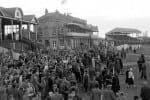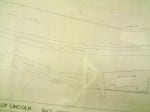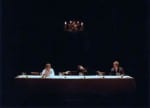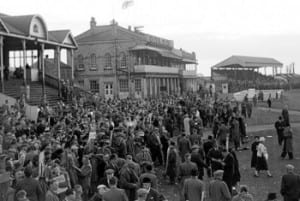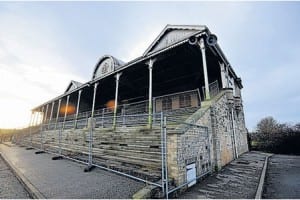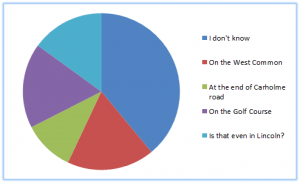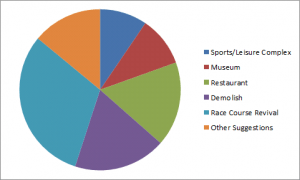Restoration – giving a voice to the voiceless: Grand Stand. We wanted to have a mix between first person perspective of feelings and factual: what would actually have been announced by a commentator as well how we believe the stand felt and currently feels. When delivering them, the audience will be seated on the available steps of the grandstand. We have created two monologues: one which tells the story of a race, using the grandstands voice as a tannoy system. As the audience listen they will be facing where the race track used to be. The other monologue explains in an emotional way what the grandstand has been and how it now feels. I’d like to have the monologue read out with the audience turned to face the building (me stood behind them reading so they can’t see me). This way they will be looking at the building listening to what it has witnessed and felt. To create my monologue I used a book called Overcoming Pathological Gambling: Therapist Guide. This book contains statistics and themes which I have used to gain an inside perspective into gambling so I could write an accurate first person narrative of what it looks and feels like.
“The games are designed in a way to let the gambler believe that it is possible to predict a win. Gamblers who seek the “best” way to obtain the jackpot essentially bet on the idea that they will one day master the game”. ((Landoucer, Robert and Stella Lachance (2007) Overcoming Pathological Gambling: Therapist Guide, Oxford University Press. p. 3))
This shows how gamblers often believe that they will master the ways of the game. The horse races are not something that can be predicted unless the races are rigged or if people who went received inside tips. However, this suggests how addictive gambling is, especially since it’s something that cannot be mastered because house always wins. As well as this, studies by Crockford and el-Guebaly (1998) and Smart and Farris (1996) “have found a strong association between pathological gambling and substance use disorders” ((Landoucer, Robert and Stella Lachance (2007) Overcoming Pathological Gambling: Therapist Guide, Oxford University Press. p.13)). I wanted to incorporate this into the monologue as the Grand Stand would have seen people going through these things.
The whole use of the tannoy system is very much like Mike Pearson’s projects Carrlands and Warplands. Carrlands project (Pearson, 2008) aimed to “enhance public appreciation and understanding” ((Mike Pearson (2012): ‘Warplands: Alkborough’, Performance Research: A Journal of the Performing Arts, 17:2, 87-95, p.87-88)) which we have taken on board and replicated through our performance at our site. We want to increase audience awareness of the Grand Stand which is an almost deserted site with so much history to be explored. Performance enhances the public’s knowledge to a site we want to get more of an audience to the stands since a lot of people don’t really know what it is anymore, it goes unnoticed by the world. Warplands shows the “ways in which a particular landscape has been made, used, reused and interpreted” ((Mike Pearson (2012): ‘Warplands: Alkborough’, Performance Research: A Journal of the Performing Arts, 17:2, 87-95, p.87)) which is what we have achieved with our performance. We want to show what it was intended for – as a stand for horse racing, then other uses during the war and then what it is currently used for.
Finally we are asking for audience interpretations of the Grand Stand which includes their ideas for future uses of the site. In Pearson’s pieces technology played a vital role as it was used to accompany a series of walks. Similarly, “technology plays a significant and transformative mediating role” ((Pearson, Mike (2010) Site-Specific Performance, Palgrave Macmillan: Basingstoke. p. 81)) in our performance. We intend on using technology to direct the audience throughout the whole performance through use of a loud hailer. The informative and emotional dialogue we use will help the audience to visualise the past and history of the Grand Stand.
